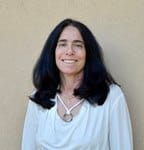Sleep and Sleep Disorders in Horses, AAEP 2008
Unlike humans, adult horses average only about three to five hours of sleep per day, with sleep events occurring intermittently throughout the day and night, with most occurring at night. Lack of sleep or a sleep disorder has the potential to impact a horse’s physical activity, attitude, and quality of life, according to Monica Aleman, MVZ, PhD, Dipl. ACVIM, who discussed sleep phenomena in horses at the 2008 Convention of the American Association of Equine Practitioners (AAEP), held Dec. 6-10 in San Diego, Calif.
In humans, sleep is classified into several stages:
- Stage 1, the wake stage of drowsiness;
- Stage 2, light sleep;
- Stage 3 and 4, slow wave or delta sleep; and
- REM (rapid eye movement) sleep, during which dreams might occur.
Humans average four to five cycles of non-REM (Stages 1 to 4) and REM during a full night’s sleep.
Researchers studying sleep disorders in horses rely on stall confinement and accustoming the horse to electrode inputs to measure readings of an encephalogram of the brain (EEG) and electromyogram of the muscles (EMG). Because horses maintain a vague state of vigilance, it is difficult to measure the transition from wakefulness to drowsiness. Usually, the horse’s stance is with full weight on both front legs and a rear leg while the other rear leg is cocked, or "primed," to kick if necessary
Create a free account with TheHorse.com to view this content.
TheHorse.com is home to thousands of free articles about horse health care. In order to access some of our exclusive free content, you must be signed into TheHorse.com.
Start your free account today!
Already have an account?
and continue reading.

Written by:
Nancy S. Loving, DVM
Related Articles
Stay on top of the most recent Horse Health news with















